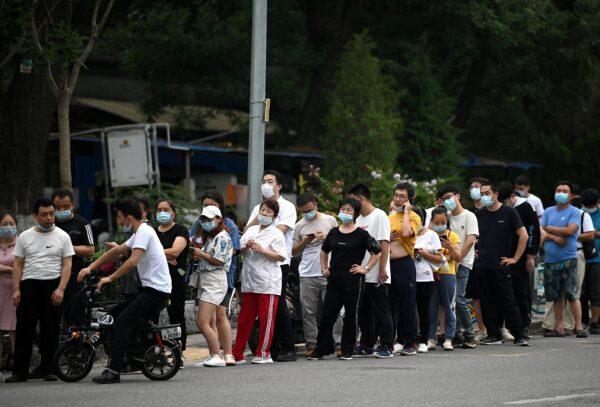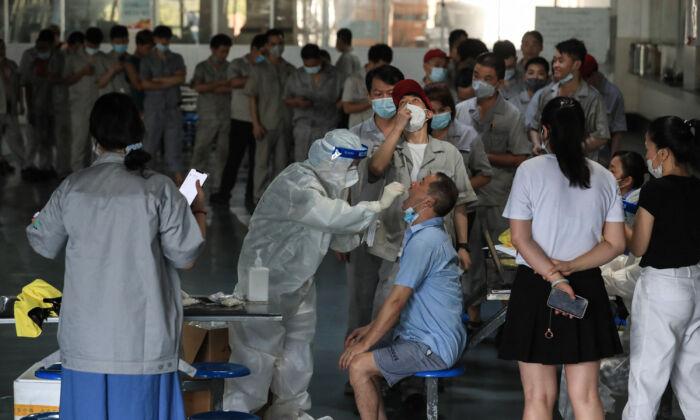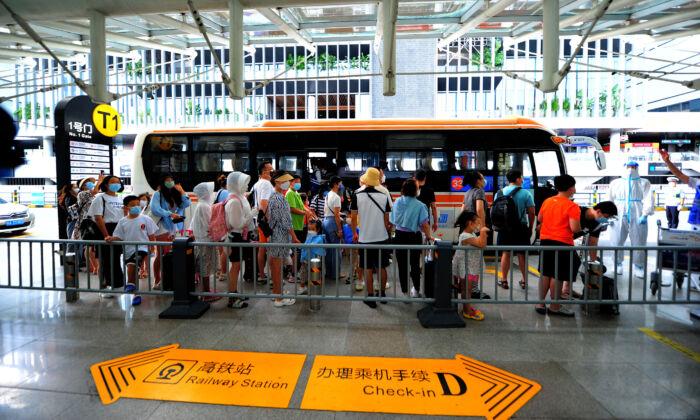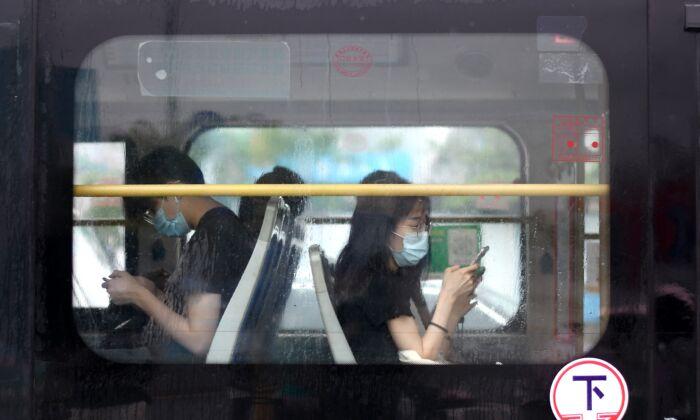State media cited a government staff member who worked at a test site in Yangzhou City, Jiangsu Province, as a vector for at least 24 infections. Reports suggest he contracted the CCP virus from a resident who visited the test site and was later diagnosed with COVID-19.
A similar scenario happened in Nanjing, where a 2-year-old boy was infected at a test site close to his home. In Zhangjiajie city in Hunan Province, five people visited the same test site on Aug. 5 and were diagnosed on Aug. 8.
To curb the outbreak, the Chinese regime ordered all the residents in the city to be tested at specific sites at a given time. This forced hundreds of residents to crowd together for the test.
The Chinese regime ordered on Feb. 7 that any city with a population over five million should finish testing in three to five days. Cities with less than five million residents have to finish the test within two days.
Yangzhou has a population of 4.56 million. It operated 414 test sites from Aug. 7 to 9. The regime ordered a one-meter (3.28 feet) social distance at the test site, but residents couldn’t maintain the distance due to limited space.

One Spreads Virus to 24
A man named Wang Qiang, 58, worked at the test site at Union Village in Wantou Town of Yangzhou City as a staff member from July 29 to July 31.Wang was diagnosed with COVID-19 on Aug. 1 and then was treated at Yangzhou No. 3 Hospital.
Two staff who worked at the test site and 22 residents who were tested at the test site were diagnosed with COVID-19. The regime said all the individuals contracted the virus from Wang.
The two staff were diagnosed with the COVID-19 on July 31. They worked at the test site at the same period as Wang.
The 22 residents were diagnosed from Aug. 3 to Aug. 7, their ages range from 5 to 80-years-old.
Reports did not include information on how Wang contracted the virus.





